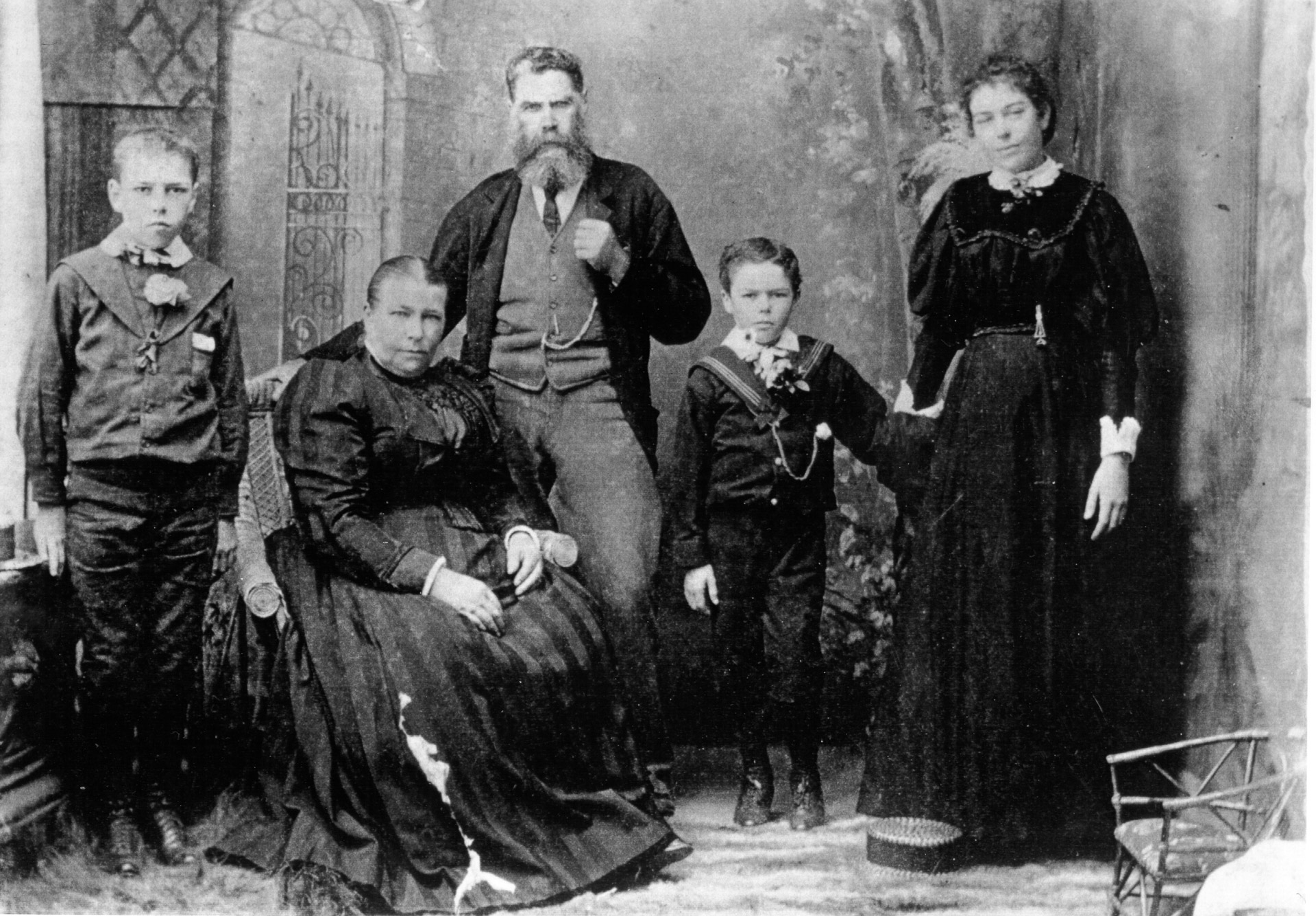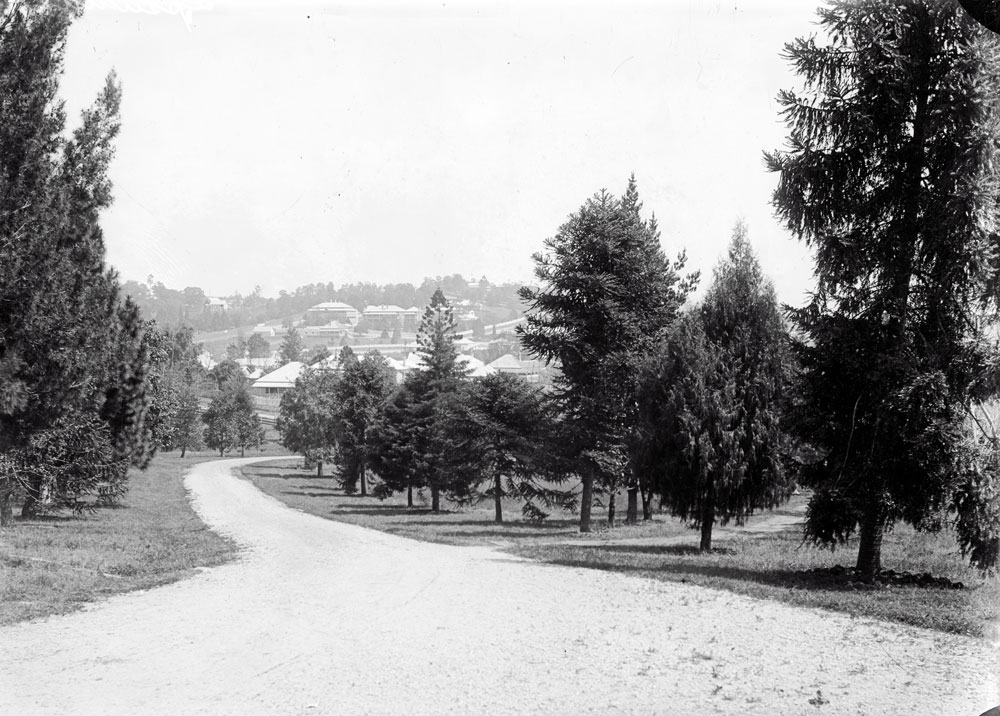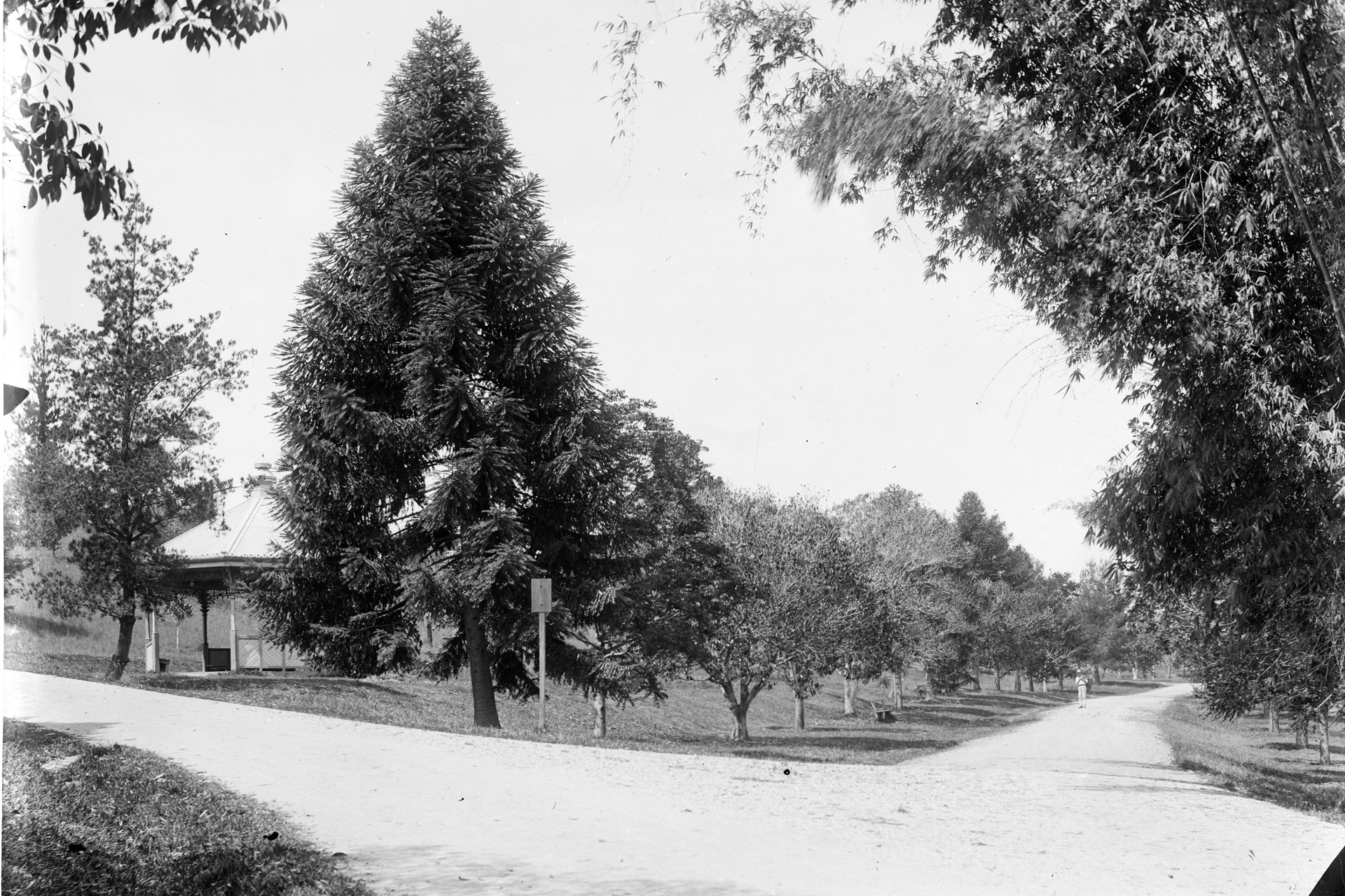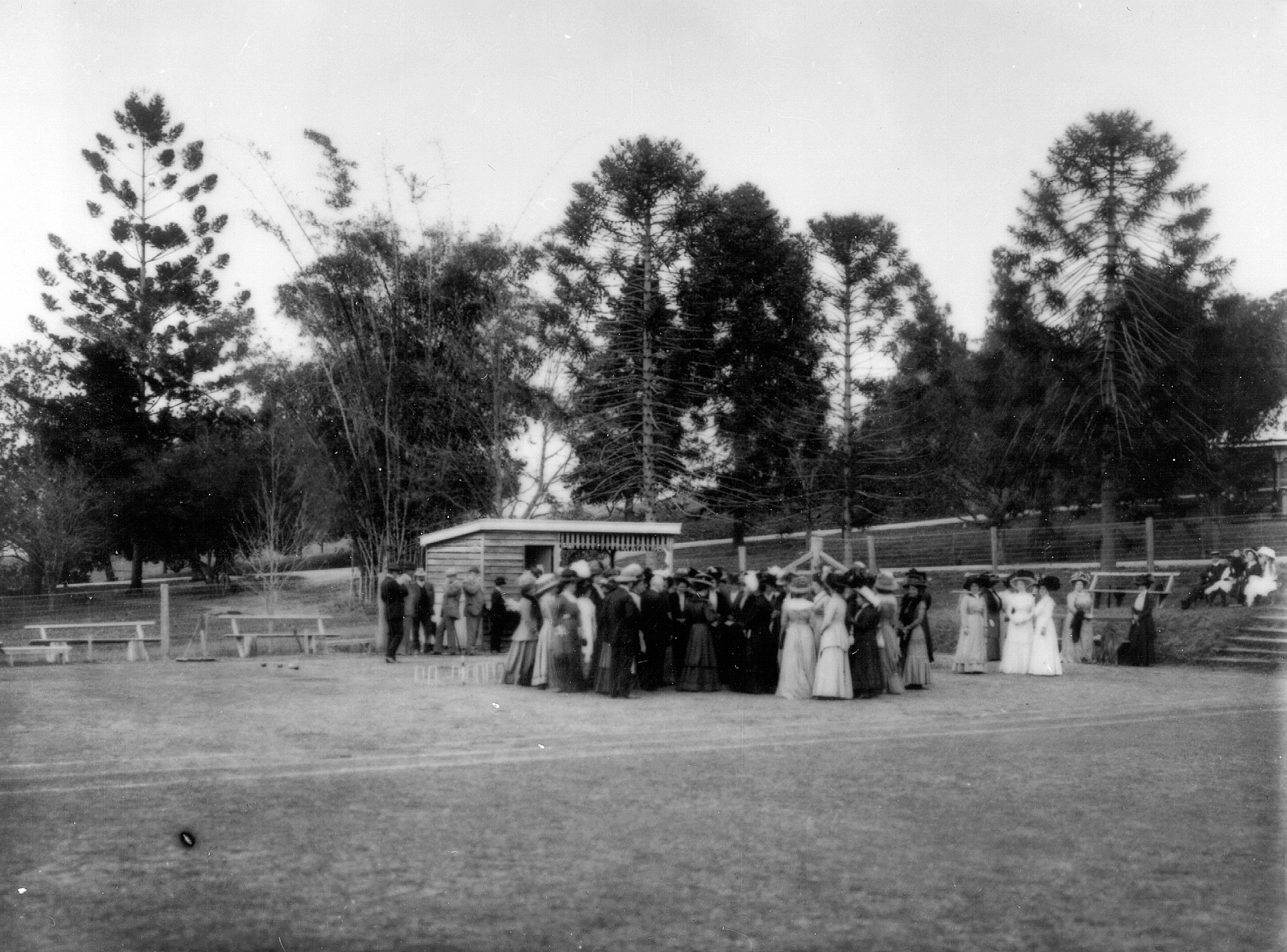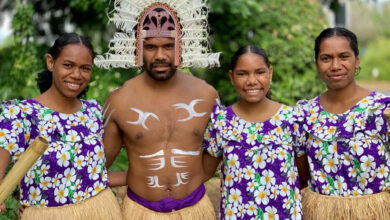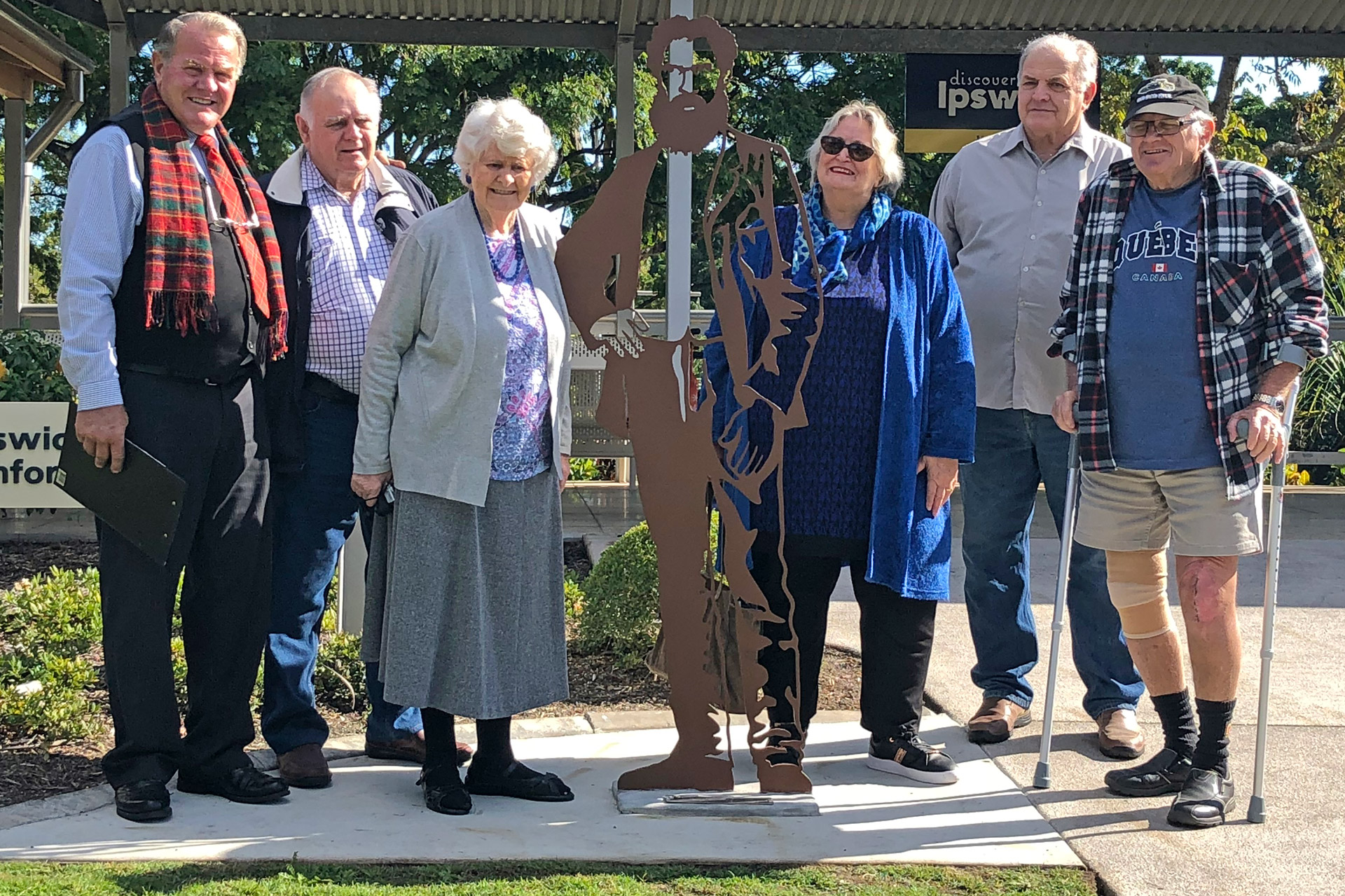
Bruce Glass (left) descendant of Alexander Munro with family members at the unveiling of the silhouette in Queens Park
A Scotsman who made his way to Ipswich in 1882 via the Darling Downs left a lasting impression on the Ipswich of today as curator of Queens Park for 27 years.
Alexander Munro is being remembered with the first historical silhouette made of solid steel installed by Ipswich City Council to mark places of historical interest.
It is now the jewel in the crown of parks in Ipswich but it wasn’t always a place of manicured lawns and gardens.
It is one of Queensland’s oldest parks and was originally designed by Walter Hill, director of the Brisbane Botanic Gardens, who supplied some of its early plants.
By the mid-1870s a series of roadways were formed using parks staff and day labourers.
When Alexander Munro was appointed as the park curator he took on the job of reshaping the land over a period of nearly three decades.
He supervised the first glasshouse or hothouse in the park to propagate dahlias, particularly the red and white variety which was named after him.
Council’s chief of Planning and Regulatory Services Brett Davey said Munro trained on the Duke of Sutherland’s estate at Dunrobin where he specialised in topiary art.
“This is the art of training plants and clipping foliage to develop and maintain clearly defined shapes.
“On leaving Scotland he ended up at the famous Kew Gardens but, thankfully for Ipswich, he decided to move to Australia.
“He landed here with his brother and ended up working on a station near Allora on the Darling Downs.
“It is there he met his future wife. They married in Warwick when he was 35 years old.
“Before taking up the positions of head curator in Ipswich, Munro was second-in-charge at the Brisbane Botanical Gardens and in charge of Bowen Park acclimatisation gardens opposite the present hospital,” Brett Davey said.
Bruce Glass, a direct descendant of Munro, joined other family members and council officers for the official unveiling. He said the family was pleased with the silhouette.
“I think also the feeling is it would be good if there was more of this (recognition) happening for other prominent people who made some contribution in the past.
“When we count up all the descendants of Alexander Munro there are quite a few great grandchildren but a lot of others, the younger ones, who weren’t there for the unveiling.
“There’s so many negative things in the world, if a young person is living in a world of negatives at least they can look at members of the family and realise they’ve got some of the same genes.
“They still need to know their forefathers were able to accomplish something.
“The term role model is appropriate for Alexander,” he said.
For more in Ipswich’s heritage trails and historical makers visit this website.
Also read:
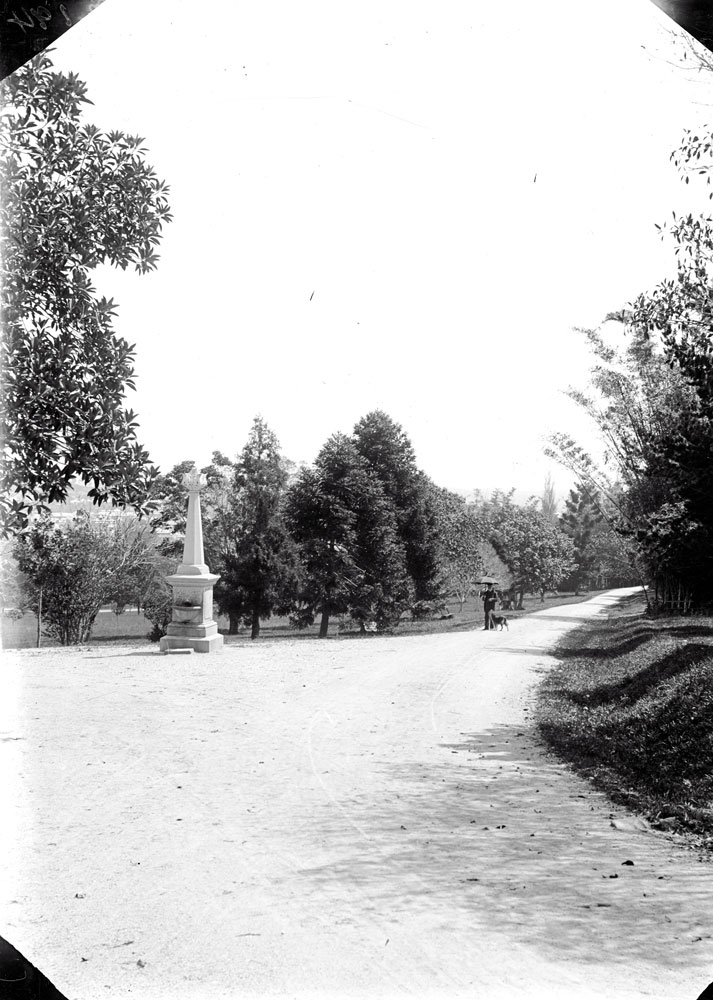
Memorial to John Macfarlane, Queens Park, Ipswich, 1900s (Benjamin and Laura Taylor, I.X.L. Studio Collection) Picture Ipswich

